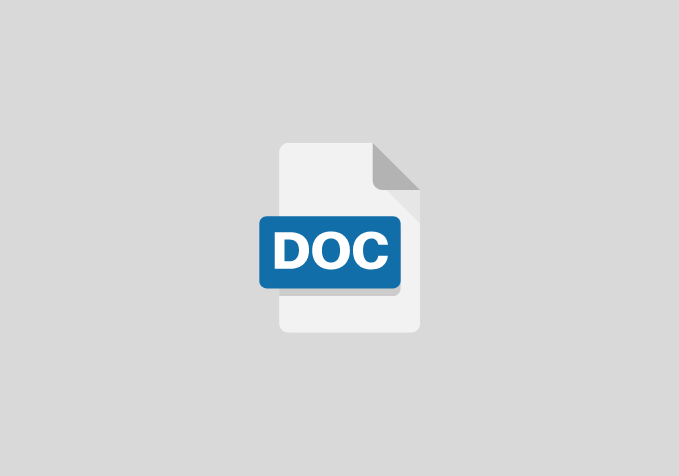Design and Implementation of a Computerized Career Guidance Information System
Chapter One
Aims/Objectives
The primary aim of this project’s work is to provide lasting solutions to the problem affecting counseling exercises in secondary schools. The following objectives below are the study
- To make the criteria and process involved in the exercise of counseling very easy and flexible
- To carefully take care of the burden, the staff faces trying to do the work of counseling annually.
- Environment gives them a better career perspective
- To maintain adequate observed information on students for future reference and quick decision-making.
CHAPTER TWO
REVIEW OF RELEVANT LITERATURE
Vocational Development and Career Counselling
Career development theories propose vocational models that include changes throughout the lifespan. Super’s model proposes a lifelong five-stage career development process. The stages are growth, exploration, establishment, maintenance, and disengagement. Throughout life, people have many roles that may differ in terms of importance and meaning. Gottfredson proposed a cognitive career decision-making process that develops through the lifespan. The initial stage of career development is hypothesized to be the development of self-image in childhood, as the range of possible roles narrows using criteria such as sex type, social class, and prestige. During and after adolescence, people consider abstract concepts, such as interests.
Career counseling may include information, modeling skills, written exercises, and exploration of career goals and plans, Rahardja (2008). Career counseling can also involve the use of personality or career interest assessments, such as the Myers-Briggs Type Indicator, which is based on Carl Jung’s theory of psychological type, or the Strong Interest Inventory,
which makes use of Holland’s theory. Assessment skills, abilities, and values are also commonly assessed in career counseling.
Training and supervision
Counseling psychology includes the study and practice of counselor training and supervision. As researchers, counseling psychologists may investigate what makes training and supervision effective. As practitioners, counseling psychologists may supervise and train a variety of clinicians. Counselor training tends to occur in informal classes and training programs. Part of counselor training may the supervision. Supervision canals so occur between licensed clinicians, as a way to improve clinicians’ quality of work and competence with various types of counseling clients.
The field of counseling psychology was formed in the mid-20th century, initial training models included Human Relations Training by Carkuff, Interpersonal Process Recall by Kagan, and Micro Counselling Skills by Ivey. Modern training models include Egan’s Skilled Helper model and, Hill’s three-stage (exploration, insight, and action)model. Studies, instruction, and feedback are common to most training models and have medium to large effects on trainees, Hill(2006).
CHAPTER THREE
DESCRIPTIONS AND ANALYSIS OF THE PRESENT SYSTEM
Methodology
There are two main sources of data collection in carrying out this study:
(a) Primary source
(b) Secondary source
Primary Source
Primary source refers to the sources of collecting original data in which the researcher made use of an empirical approach such as a personal interview.
Secondary Source
The need for secondary sources of data for this kind of project cannot be overemphasized. The secondary data were obtained by the researcher from magazines, journals, Newspapers, and Library sources.
CHAPTER FOUR
DESIGN AND IMPLEMENTATION
Design Standard
The system made use of a top-down design in processing data. Access to information is made through the home page. All the subsystems in the program perform specified task. Each module is tested before the final integration and testing of the whole system.
CHAPTERFIVE
SUMMARY, RECOMMENDATION AND CONCLUSIONS
Summary
Career assessments are tests that come in a variety of forms and rely on both quantitative and qualitative methodologies. Career Assessments can help individuals identify and better articulate their unique interests, values, and skills. Career counsellors, executive coaches, career development centres and out placement companies often administer career assessments to help individuals focus their search on careers that closely match their unique personal profile.
Career counselling advisors assess people’s interests, personality, values and skills, and also help them explore career optionsand research graduateand professional schools.Careercounsellingprovidesone-on-oneorgroupprofessionalassistance inexploration and decisionmaking tasks relatedtochoosing amajor/occupation, transitioningintotheworldofworkorfurtherprofessionaltraining.Thefieldis vastand includes career placement, career planning,learning strategiesandstudent development.
Recommendation
Counselling application is recommended tobe online foreasy accessibility by people. This will help them to be counselledonline. The researcher recommendsalsoforafastimplementationofthissoftwarebycounsellorsto enable themperformtheir work efficiently.
Conclusion
An objective form of career counselling is through an aptitude test, or a career test. Career testing is now usually done online and provides insightful and objective information about which jobs maybe suitable for thetest taker based on combination of their interests, values and skills. Career tests usually provide a list of recommended jobs that match the test takers attributes with those of people with similar personalities who are successful attheir jobs. Career guidance and counselling isan essential in all secondary schools. Every child needs tobe properly guided and counselledtoaid him select the best career in his own interest to develop a good future for theindividual. Developinga computerized system for careerguidance and counselling willhelpimprove the mode ofguidance and counselling bymaking it easier, more accurate and reducing the stress involved.
REFERENCES
- Betz, N.(2008). Advancesin Vocational Theories.(4thed.).InS.BrownandR.cLent(Eds.), Handbook ofcounsellingPsychology,(4thed).NewYork:Joh Wileyandsons.
- Constantine, M.,&Sue, D.(2007). Perceptionsofracialmicroaggressionsamong blacksuperviseesincross–racialdyads.JournalofcounsellingPsychology, 54(1),1–16
- Constantine,M.(2007).RacialmicroaggressionsagainstAfricanAmericanclients incross-racialcounsellingrelationships. JournalofcounsellingPsychology, 54(1),1–16
- Galassi,J.P.,Crace,R.K.,Martin, G.A.,James,R.M.&Wallace,R.L. (1992). Clientpreferencesandanticipationsincareercounselling. California:Guildford Press.
- Gelso,C.J.,&Hayes,J.A.(2001).The Psychotherapy Relationship: Theory, ResearchandPractice.(p. 22–46):NewYork:JohnWiley&Sons.
- Gelso,C.J.,&Samstag, L.W.(2008).Atripartite modelofthe therapeutic relationship.InS.Brown&R. Lent(Eds.),Handbook ofCounsellingPsychology(4thed) (pp.267–283). NewYork:JohnWileyandsons.


